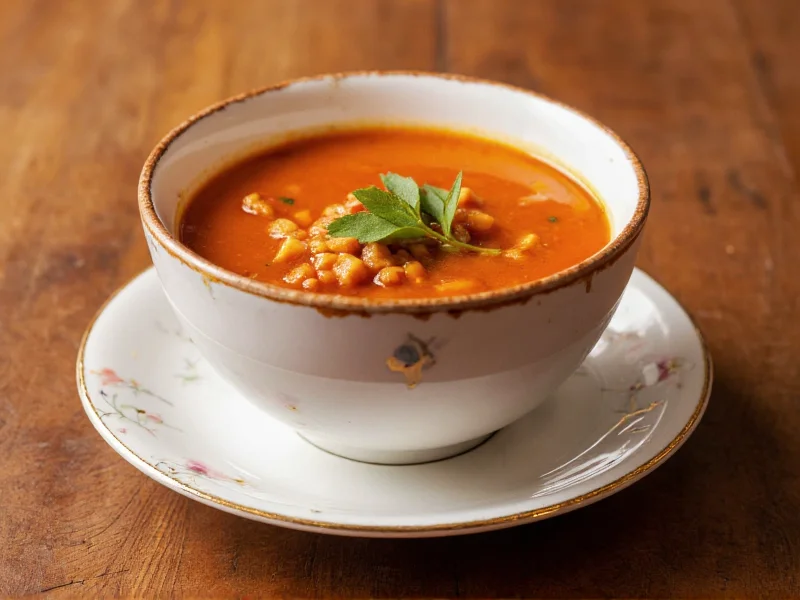Understanding what constitutes a "cup of soup" goes beyond simply grabbing any container labeled "cup." This measurement standard plays a crucial role in recipe accuracy, nutritional calculations, and proper portion control. Whether you're following a cookbook, checking nutrition facts, or serving soup at a restaurant, knowing the precise definition prevents confusion and ensures consistency.
Measurement Standards for Soup Servings
The term "cup" in culinary contexts specifically refers to a standardized volume measurement equal to 8 fluid ounces or 240 milliliters. This differs from the variable capacity of actual drinking cups, which can range from 6 to 16 ounces depending on design. When recipes call for "a cup of soup," they mean this precise 8-ounce measurement, not whatever fits in your favorite mug.
Professional kitchens and food manufacturers adhere strictly to this standard. The U.S. Food and Drug Administration (FDA) recognizes 8 ounces as the standard serving size for soup in nutrition labeling. This consistency allows for accurate calorie counting and nutrient tracking across different soup varieties.
| Serving Context | Typical Volume | Purpose |
|---|---|---|
| Standard measurement cup | 8 fl oz (240ml) | Recipes, nutrition facts |
| Restaurant cup soup | 6-8 fl oz (180-240ml) | Side portion, appetizer |
| Bowl of soup | 12-16 fl oz (350-475ml) | Main course portion |
| Instant soup cup | Varies (typically 8-12 fl oz) | Single-serve convenience |
Restaurant Portions vs. Measurement Cups
When ordering "a cup of soup" at a restaurant, you'll typically receive 6-8 ounces, slightly less than the full measurement cup. This smaller portion serves as an appetizer or side dish. A "bowl" of soup usually contains 12-16 ounces, making it suitable as a main course.
The discrepancy between measurement standards and restaurant portions explains why many home cooks find restaurant soup recipes don't yield expected quantities. Professional chefs often use the term "cup" more loosely in menu descriptions while maintaining precise measurements during preparation.
Nutritional Considerations for a Cup of Soup
Nutrition information for soup always references the 8-ounce standard serving. A typical cup of vegetable soup contains 60-100 calories, while cream-based soups range from 150-250 calories per cup. Broth-based soups generally provide 2-5 grams of protein per cup, while bean or meat-based varieties offer 8-15 grams.
When comparing "cup of soup nutrition facts" across products, ensure you're examining the same volume measurement. Some manufacturers list nutrition for smaller portions (6 ounces) to make calorie counts appear lower, which creates confusion when tracking intake.
Measuring Soup Accurately at Home
For precise recipe results, use an actual liquid measuring cup rather than estimating with a drinking vessel. Place the measuring cup on a level surface, pour soup to the 8-ounce line, and check at eye level for accuracy. This technique prevents common errors that occur when measuring against curved mug surfaces.
When preparing soup from scratch, remember that ingredients like vegetables and meats reduce in volume during cooking. Start with approximately 10 cups of raw ingredients to yield 8 cups of finished soup after cooking and reduction. This accounts for the "how many cups of vegetables for a cup of soup" calculation many home cooks struggle with.
Single-Serve Soup Products
Instant soup cups have popularized the concept of soup in actual cups, but their contents vary significantly. Most contain dehydrated ingredients requiring added water, with final volumes ranging from 8-12 ounces depending on preparation instructions. Read labels carefully to determine whether nutrition information refers to the dry mix or prepared product.
The "cup of soup measurement versus container" confusion frequently leads consumers to underestimate calorie intake. Many assume the entire package constitutes one serving when it may actually contain 1.5-2 cups of prepared soup.
Practical Applications for Different Settings
Catering events requires precise calculations using standard measurements. For 50 guests, you'd need approximately 25 quarts (100 cups) of soup for a standard 8-ounce serving per person. Understanding these conversions prevents both shortages and excessive waste.
Dietitians and nutrition professionals rely on the 8-ounce standard when creating meal plans. When clients ask "how many ounces in a cup of soup for diet purposes," the answer remains consistent at 8 fluid ounces, regardless of soup type or preparation method.











 浙公网安备
33010002000092号
浙公网安备
33010002000092号 浙B2-20120091-4
浙B2-20120091-4